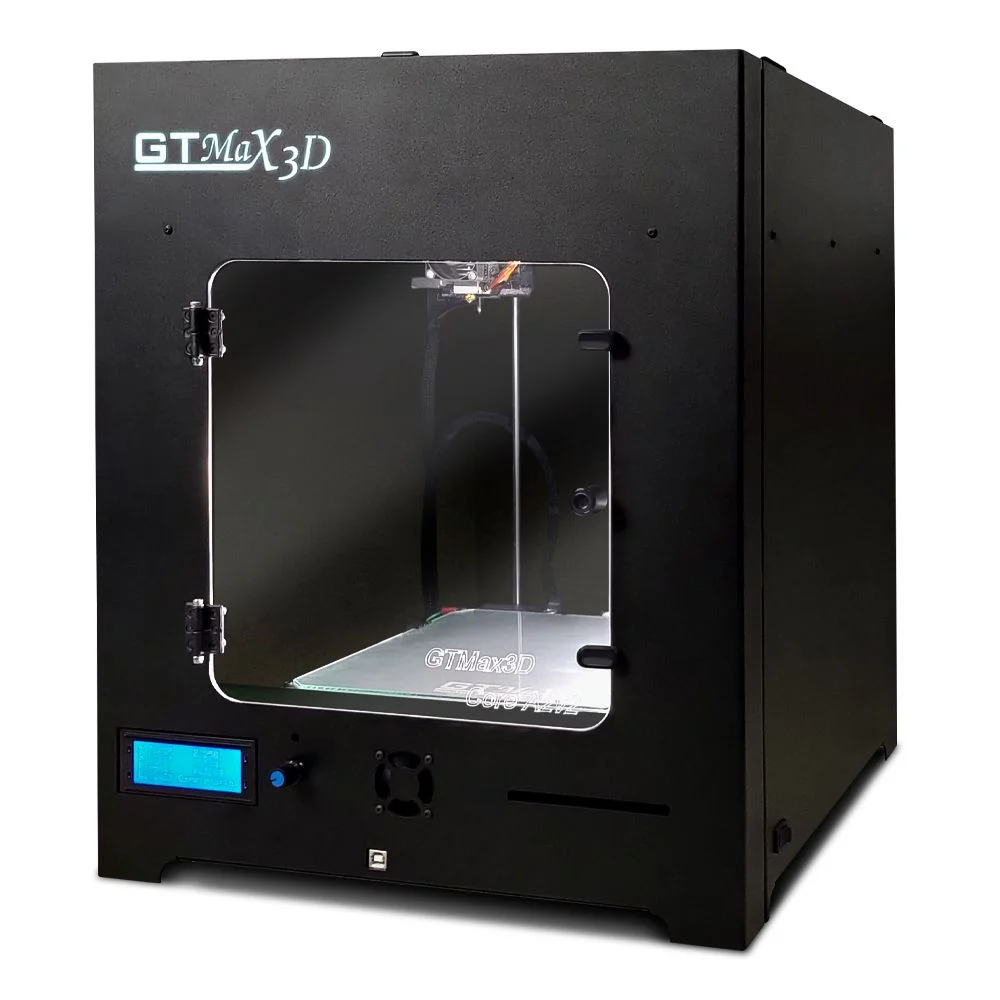Compare Ender 5 vs Core A2V2
Comparison between the best 3D printers
Choose the best 3D printer at the best price. The cheapest 3D printers are here.
Buy a 3D printer here with 3D Fila.
 |
 |
|
| Model | Ender 5[BUY Ender 5] |
Core A2V2 |
| Printing Material | Filament | Filament |
| Buy Filament for Creality 3D Ender 5 | Buy Filament forGTMax Core A2V2 | |
| Estimated price | $399,00 | $684,00 |
| Manufacturer | Creality 3D | GTMax |
| Release Year | 2020 | 2019 |
| Print Volume [mm] | 220x220x300 | 220x220x240 |
| Printer Size [mm] | 485x510x552 | 425x460x512 |
| Weight [kg] | 11,8 | |
| Power Loss Recovery | YES | YES |
| Enclosed printer | NO | YES |
| Bed Leveling | Manual | |
| Filament End Sensor | NO | YES |
| Bed type | Heated | Heated |
| Power supply system | Bowden | Bowden |
| Standard nozzle | 0,4 | 0,4 |
| Maximum Nozzle Temperature [°C] | 255 | 295 |
| Maximum Bed Temperature [°C] | 100 | 135 |
| Maximum printing speed [mm/s] | 180 | 150 |
| Filament holder | YES | YES |
| Camera for supervision | NO | NO |
| Recommended filaments | PLA, TPU, ABS, PETG | PLA, PETG, Tritan, Flex, ABS |
| Recommended slicers | Cura, Simplify, Slic3r | Cura, Simplify, Slic3r, IdeaMaker |
| Maximum Resolution [mm] | 0,1 | 0,05 |
| Processor | 32 bits | |
| Display | Mono | Mono |
| Power Supply | 24V / 360W | |
| Connectivity | SD / USB | SD / USB |
| Operating systems | Windows, Mac, Linux | Windows, Mac, Linux |
| Date of registration in the system | 2021-04-15 | 2022-11-12 |
| Release date | 2020 | 2019 |
| Extra features | Crealitys Ender 5 stands out with a solid frame and a larger 220 x 220 x 300mm print volume. Its assembly is simple and quick, offering high print quality and speeds of up to 80mm/s. With a magnetic bed, it makes it easy to remove prints. Notable for being hackable and expandable, the Ender 5 continues Crealitys innovative tradition in the affordable 3D printer market. Equipped with a 350W/24V Meanwell power supply, it heats up quickly, in addition to having efficient cable management and modified Marlin firmware. Its unique design includes dedicated stepper motors for each axis and smooth movement on the Y axis, providing more consistent and detailed prints. | The GTMax3D ProCore A2v2 is a compact and robust 3D printer with a printing area of ??220 x 220 x 240 mm. It offers high print quality, ranging from 0.05 mm to 0.32 mm. Its features include automatic filament detection and changing, travel speed of up to 300 mm/s, and a heated aluminum bed with a glass top. It has automatic bed leveling with 16 points and an all-metal hotend that reaches up to 298°C. The printer has a carbon steel frame with electrostatic painting, is automatic bivolt and has connectivity via USB and SD card. The Bowden system and core xy kinematics complete its advanced features. |
| Support for multiple colors and materials (AMS and CFS) | NO | NO |
Notes * |
||
| Cost-benefit | 7 / 10 | 6 / 10 |
| Hardware | 1.5 / 10 | 2.5 / 10 |
| Tela | . | . |
| Print volume | 3 / 10 | 3 / 10 |
| Performance | 1 / 10 | 1 / 10 |
| [BUY Ender 5] |
Conclusion |
| In comparing the Creality 3D Ender 5 and the GTMax Core A2V2 3D printers, several key factors emerge that highlight their strengths and weaknesses, ultimately guiding potential buyers toward the most suitable option based on their needs and budget. The Ender 5, priced more affordably, offers a larger print volume alongside ease of assembly and operation, making it a great choice for beginners or those with light to moderate printing demands. Its solid construction and capability to handle multiple filament types provide versatility, while features like its magnetic bed improve the overall user experience by facilitating print removal. Conversely, the Core A2V2, while more expensive, offers advanced features that may appeal to more experienced users or professionals. With automatic filament detection, an all-metal hotend, and superior bed leveling capabilities, it delivers higher precision with its maximum resolution and allows for the use of a wider range of materials. The included enclosure also contributes to better print consistency. In terms of performance, both printers operate within a similar realm, though the Ender 5 excels in speed compared to the Core A2V2. However, the A2V2 compensates with its higher maximum nozzle temperature, which may be beneficial for printing with specialized materials. Ultimately, the choice between these two models comes down to the user's specific requirements. For those prioritizing cost-effectiveness, ease of use, and a larger build area, the Ender 5 stands as a formidable option. On the other hand, tech-savvy users seeking enhanced automation, thermal management, and precision in their 3D printing endeavors may find the investment in the Core A2V2 justifiable. |

